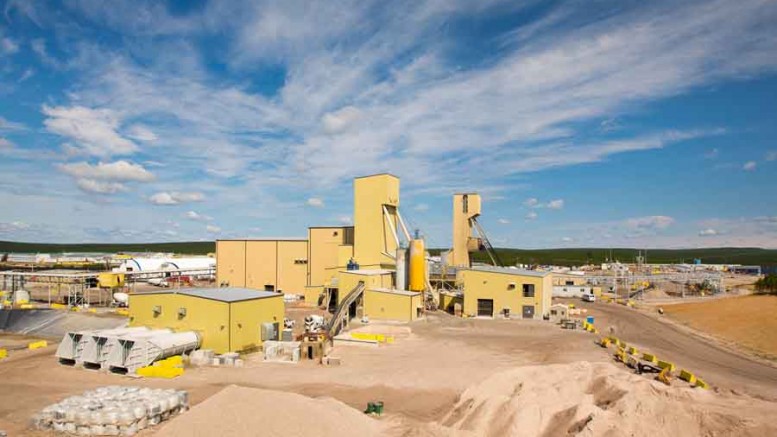Saskatoon-based Cameco (TSX:CCO; NYSE:CCJ), like many uranium miners, is enjoying renewed predictions of higher uranium prices and growing demand.
Despite uranium oxide spot prices closing 2013 down 21% at US$32.50 per lb., Raymond James analyst David Sadowski forecasts spot prices to average US$42 per lb. in 2014 and US$65 per lb. in 2015, up 20% and 62% over current levels.
As a result, Sadowski urges investors to increase their positions in high-quality uranium firms. Cameco is one of his top-three uranium picks this year, with a $25 target price and an “outperform” rating.
Sadowski says the market could re-rate the leading producer’s shares following several events, including the release of its “seasonally strong” fourth-quarter results on Feb. 7 and the start-up of its 50%-held Cigar Lake uranium mine in northern Saskatchewan.
Mining at Cigar Lake, which was delayed by six months in 2013, should begin this quarter, with ore processing slated to start by mid-year.
More importantly, Sadowski believes Cameco will get a boost from an expected rebound in uranium prices as Japan restarts its reactors this year, followed by more end-users signing long-term contracts.
“Due to a major slowdown in buying [after Fukushima] we have seen a pronounced rise in the auranium utilities [bought] going forward,” Sadowski writes.
While there is some near-term uncertainty around Japan’s restart, Cameco’s chief financial officer Grant Isaac says it shouldn’t impact the company, as its sales are largely committed until 2016.
He argues the long-term fundamentals for uranium are strong. “It’s really because our market is in transition from what’s historically been a supply driven industry to what is truly becoming a demand-driven industry, and this actually bodes well for existing producers like Cameco,” he said in a recent investor presentation.
What’s fuelling this transition is the increasing demand for energy as the population grows. “The demand for electricity has been growing quite sharply. From 1980 to 2010 it tripled and from 2010 to 2035 electricity demand is expected to double again,” Isaac said.
To keep up with that demand, reactors are being built globally. Cameco predicts there should be 90 new reactors by 2022, with 70 now under construction.
By 2022 Cameco estimates annual uranium oxide demand of 220 million lb., up 50 million lb. from 2013. Isaac noted only 20% of that demand will be filled by new supply.
Several factors are affecting the supply, including potential mine disruptions and the end of the 20-year highly enriched uranium (HEU) deal in 2013. Under the contract, the U.S. bought HEU from Russia that came from nuclear warheads and military stockpiles.
With the contract ending, the market is estimated to lose 24 million lb. secondary uranium supply a year, Isaac said, adding that the need for primary uranium production would increase.
Industry reports point to a supply deficit of 2.2 million lb. in 2018, which should increase over the years, Sadowski writes.
Cameco, Isaac contends, is in a good position to overcome any short-term uncertainties in the market, while taking advantages of the brighter long-term prospects by bringing Cigar Lake, its key growth project, online.
Last year, the company guided production of 23.3 million lb. from its uranium mines in Canada, the U.S. and Kazakhstan. It aims to increase output to 36 million lb. by 2018.
Cameco shares have gained 11% since the start of the year to close Jan. 28 at $24.53.


Be the first to comment on "Cameco rises on uranium optimism"